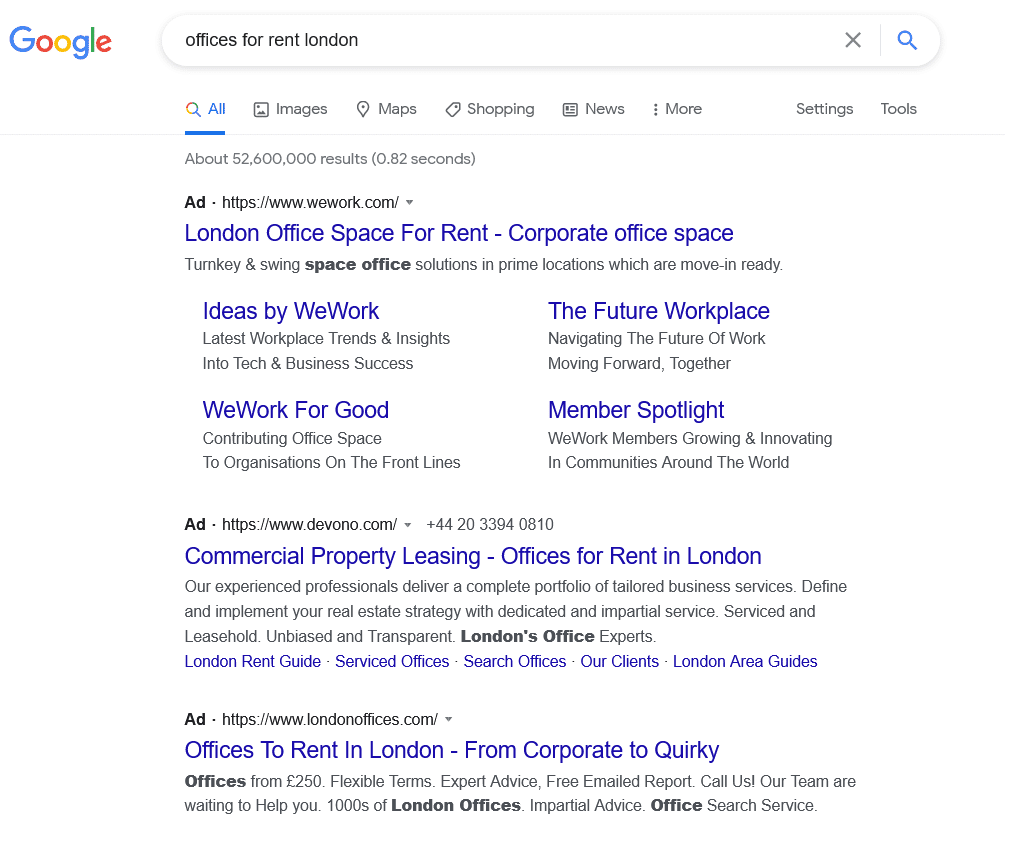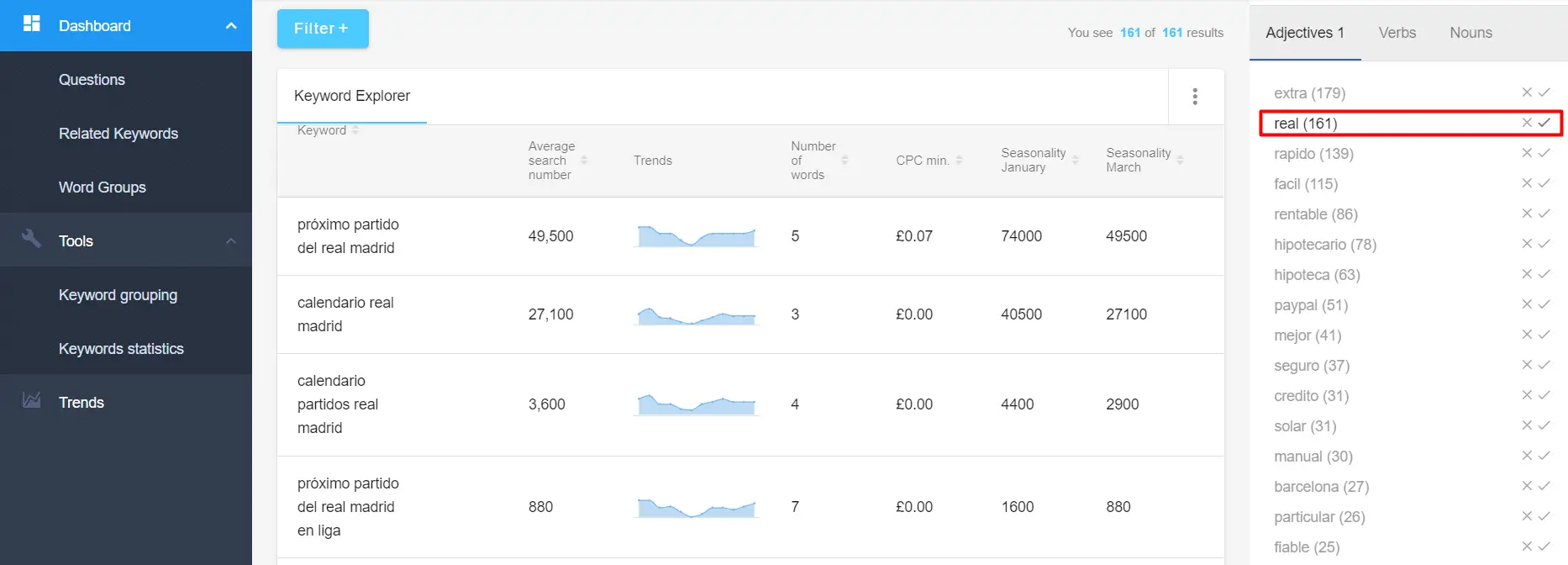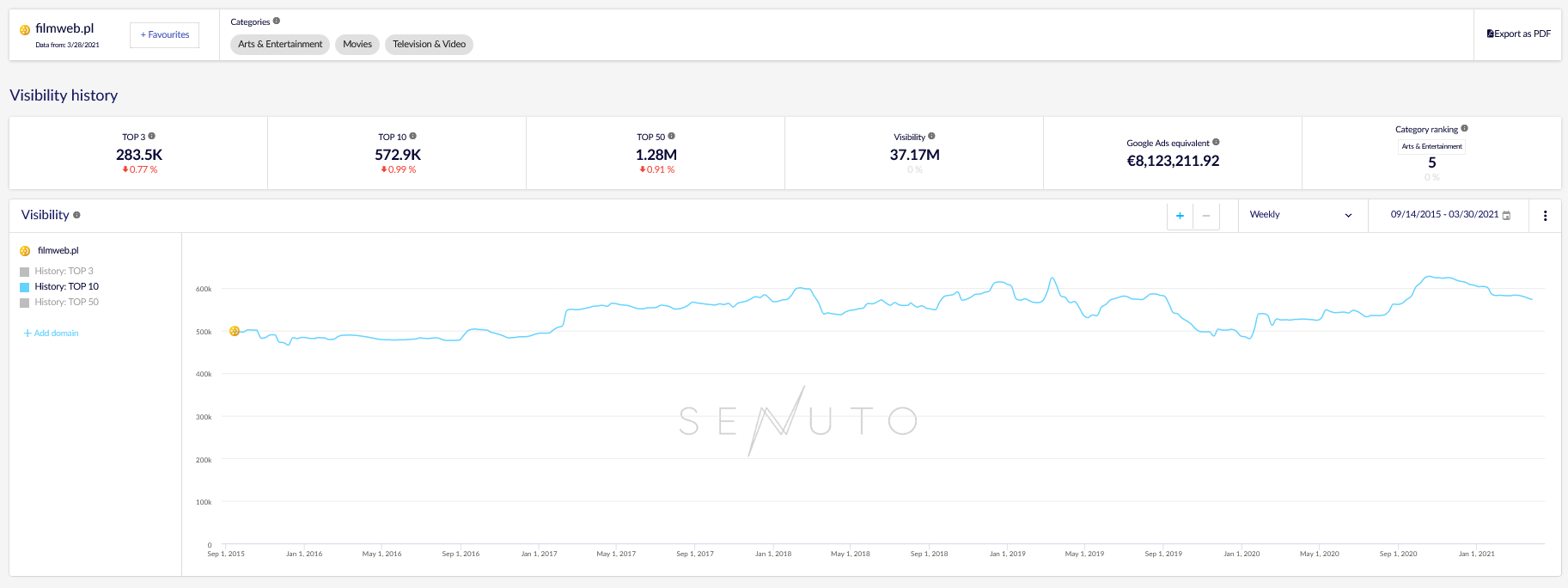How to drive traffic to your website? Good question. There’s plenty of sites full of fantastic content or offers that still get almost no traffic at all. Or not enough to beat the misery and self-doubt when growing the project. In another scenario, a site may have garnered a sizable audience only to hit a plateau phase. No new visitors are in sight. A glass ceiling. How to break through?
How to drive traffic to your website if your statistics are barely off the ground? How to increase traffic at the later stages of growth? Whether you’re running a blog, an e-commerce site, an information portal, or any other online business, this article will give you a heap of useful pointers. Before we cut to the chase, let’s embrace one simple rule:
To drive traffic, you must measure traffic
Add Google Analytics to your website to track your progress and learn which areas you can improve and to what extent. Multiple charts will give you easy access to a ton of valuable data: site visits, new and returning users, average session duration, or traffic sources.
Right, the traffic sources. There are many, but the big four in Google Analytics includes:
- Direct. Usually, this means that a user has typed your domain name in the address bar and pressed Enter. But keep in mind that direct sources also include traffic from email programmes. Say you send a newsletter with a link to a new article on your website, and the recipient opens the link in their email programme. That click boosts your direct traffic. The same goes for clicks on bookmarks previously added to the browser.
By the way: this generates some problems with measuring traffic because “direct” is – contrary to what you might expect – a rather broad term. As you inspect your statistics, you don’t really know how many people typed the URL manually and how many clicked on a bookmark. That’s the so-called “dark traffic” of unknown origin.
At a higher level of data analysis – when we want to go over our customer behavior and traffic sources with a fine-toothed comb – direct traffic is more trouble than it’s worth. To remedy that, arm your links with the so-called UTM parameters. This way, the clicks will be automatically classed as “campaign traffic”.
- Organic. Comes from Google but not from the ads. The point of our SEO activity – all the efforts made to optimize your site and content for Google algorithms – is generally to push your listing to the top of the search results page displayed for a target keyword. We will discuss keywords and SEO in more detail later on.
- Referral. This includes clicks on links posted on other websites. For instance, when one blogger links to another and thus generates traffic on the target website, we call it referral traffic. It also – or primarily – includes traffic from social media channels such as Facebook, Instagram, Twitter, or Linkedin. People link to content on their social media, their followers click on the links, the website gets traffic. You get the idea.
Where else can you get traffic? For one, from display ads, that is the omnipresent promotional banners and graphics strewn across multiple sites. ⅓ of all users block this content with AdblockPlus, though.
You could also try using an affiliate network (often classed as a referral source) or links inserted on a website under various partner programs. Affiliate marketing was discussed by Craig Campbell at a Senuto webinar. You can watch it here (in English):
Why should you measure traffic?
Source traffic analysis is important as it allows you to track the efficiency of your marketing efforts. If the data shows that our social channels leave room for improvement – let’s improve them. Simple as that. Besides, source traffic analysis helps you to identify your (potential) client and better target your future content.
If you’re selling men’s shavers and your most frequent visitors are women aged 18–24, it’s not necessarily a cause for concern. Theoretically, your target visitors are male. But what if the women land on your site to buy gifts for men? That seems likely. Let’s exploit that traffic. Maybe by adding new articles on how to choose a men’s shaver?
Rather than fuss over the profile of your average visitor, focus on the “profit”. For instance, see how many of your visitors actually make a purchase. If your website targeted at men is visited mostly by women, but they do have an intent to purchase – no worries. But if your website attracts small numbers of men, lots of women, and the sales stagnate, something’s off.
When it comes to driving traffic to your website and turning your visitors into clients, there’s plenty of things you can do wrong.
On the other hand, there are just as many good practices that may work wonders.
All the points below have one common denominator: to drive traffic to your website, you must be proactive.
Let’s get to it.
Run PPC campaigns
As you’ll see very soon, I start with this one for a good reason.
PPC stands for pay per click. It’s an advertising model characteristic of Google and the Ads service (former Adwords). PPC in a combination with SEO (search engine optimization) are two ways of driving Google traffic. Both count among the most efficient methods there are.
In a PPC model, you don’t pay for displaying your ads. Google collects money from your account only when the user accesses your site. The cost of a single click depends on a range of factors, including the competitiveness of the target keyword.
A campaign which targets the phrase “offices for rent London” will be way more expensive than the one build around “beauty salon London”. Even if more people search for beauty salons than for office space, the big money is in the real estate sector. Agencies can spend much more than beauty salons on acquiring a single client because their single transaction could be worth tens or even hundreds of thousands of pounds. Contrastingly, a beauty salon usually handles payments in tens or hundreds rather than thousands of pounds.

If we type “offices for rent London” in Google Search, top results will be sponsored (tagged as ads). Data estimates performed by Senuto reveal that site owners will pay a good 5 pounds for each of these clicks (tempting as it was, I did not click on any for fun, I’m not that kind of guy). If they were beauticians promoting their London salons, an estimated CPC (cost per click) would be around 0,5 pounds on average.
In the longer run, PPC campaigns cost more than SEO, but they have one indisputable advantage – they work instantaneously. Waiting for the first effects of optimization may take months. Google Ads are here and now – you set up a campaign and it’s there. When someone clicks, you foot the bill.
For this reason, PPC is a great way to drive traffic as you’re launching your business (which is why it opens this list). At this stage, you need patience. You can’t see the effects of your SEO yet. Your social media channels – a Facebook page or an Instagram account – have barely started attracting followers. You can’t send links in the newsletter because your subscriber database is still in its early days.
What can you do? Seize paid traffic. Bloggers or businesses aiming for slow growth may skip this point. If you’re not in a hurry to drive people to your site, better slowly invest in SEO – the effects will come with time and last longer. On the other hand, if you own an e-commerce business and want to start selling right from the start, PPC is a solution for you.
Importantly, PPC campaigns allow you to specify the profile of your target users. Their location, for one. Other than that, you can define the preferred gender, age, or even education.
Additionally, you can determine the goal of your ad campaign. If you strive to share a new ebook, you can direct Google traffic right to the download page. The same goes for time-limited campaigns for selected products or the promotion of special events.
To sum up PPC campaigns: they do the trick if you need to increase and direct traffic in a specified time frame. Especially at the initial stage of our business growth. With time, the SEO efforts start to pay off and many site owners shift campaign focus to optimization for organic traffic. Yet, they rarely give up PPC campaigns altogether. Brought together, these two complementary traffic sources and their skilful use yield spectacular results.
Create searchable content (the case of Anthony Burn)
The Internet contains heaps of quality content that nobody will ever access from the search engine. Why? Because it doesn’t answer any specific question.
If we open an opinion magazine, it will feature columns. A column is a form of journalism bordering on literature. A free-flowing style, a title that may or may not refer to the content, no thesis in the introduction, loose links between the facts. All that adds up to the image of a typical column.
Such a piece would be a delight to read in a paper. Yet, if it were a blog post, nobody would ever stumble across it in Google. The search engine would simply fail to index the content. What would be a suitable keyword for indexing, anyway? What should we type in the search box to find that column?
Imaginably, somebody could search specifically for “Anthony Burn’s column” and arrive at the author’s website optimized for that particular phrase.
But assuming that the fictional Anthony Burn is not a well-known press columnist but a guy on a quest to make a name for himself on the Internet, that scenario belongs in the realm of fantasy. Nobody knows Anthony Burn, so nobody’s looking for him in Google.
Anthony may successfully promote his creative content on channels such as Facebook (setting up a fanpage titled, self-evidently, “The Burn of Truth”). But if he wishes to generate traffic and attract Google users, he must start thinking like Google users.
This would involve striking a compromise with his inner artist. He would have to construct his articles around a predetermined keyword. Alas, in one way or another, this would put a curb on his creative freedom.
The prize may be worth the price, though.
If Google deems Anthony’s piece worthy of showing at the top of search results for a particular keyword, his website will get a lot of new views. Senuto examined the correlation between the number of clicks and Google rank in our study: Organic CTR in 2020 – a study of 8 452 951 keywords (CTR is the ratio of clicks to the number of people who saw the link).
And how do you choose the right keyword to serve as the focal point of your piece? Above all, it’s a good call to use Senuto Keyword Explorer. A cornucopia of hints awaits.

You may also read up on Keyword research – a quick AND reliable way to do it!. The text will give you a good grasp of the whole idea and – if you want – let you increase your website traffic with the right selection and use of keywords.
You don’t need to be Anthony Burn. You don’t need to be a blogger at all. If you’re running an online business, that’s all the more reason to create searchable content.
The rules are the same for everybody. It’s only the context that changes.
Create titles that people will click (and Google will get)
Few people are likely to click a title saying “A Summary of ‘The Unbearable Lightness of Being’”. But if you point to some excerpt of the content – an intriguing quote or a bold thesis – and use it as the opening of your title (followed by “A Summary of ‘The Unbearable Lightness of Being’”), you stand a far better chance of catching the eye of an average user.
Remember that this user is scrolling through Facebook with a long face, waiting for that special something that will get them to cut a rug. Your title needs to be like Uma Thurman in “Pulp Fiction” who coaxed the reluctant John Travolta to the dance floor. Good for us – all in all, we got one of the best dance scenes in the history of the cinema.

What would it be if not for the seductive powers of the title… wait, of the character played by Uma?
That’s one thing: the appeal of the title. Something that piques your curiosity and inspires to click.
Another thing is to make your title SEO-friendly. You can read all about the right text structure for the search engine in our article: Pozycjonowanie bloga. Jak się do tego zabrać? (English version coming soon). The advice is useful not only for blogs but for virtually any site with content. The rules are universal.
To optimize your titles for the search engine, make sure they contain a keyword. It is the phrase – theoretically, at least – that the user is searching for on the Internet. Again, these don’t have to be blog post ideas. If you want to drive traffic with various types of content, learn to title them in a way that:
a) appeals to the reader and sparks interest,
b) conforms to the rules of SEO. In practice, add a keyword to your title. It’s best to put it right at the front, but a keyword near the end of the title will work as well.
Do your SEO
As I’ve already said, SEO is the totality of efforts focused on optimizing your website (or content) for the search engine. The goal to increase your website’s visibility in Google. Better visibility means better visit statistics.
If your website shows up only on the second or third page of the search results for a given keyword, don’t expect any Google traffic. However, the closer you get to TOP 3, the bigger number of people will not only see your listing but actually click on it.
Importantly, you need to keep your finger on the pulse and track your website’s performance in Google.
Let’s inspect Filmweb (the well-known and well-liked Polish equivalent of IMDb). A quick peek at Senuto Visibility Analysis is enough to see the website’s recent visibility spikes and drops. There’s also a list of keywords for which the website is listed in the TOP 3, TOP 10, and TOP 50 results.

Scroll down Visibility Analysis to see keywords for which the website is visible in Google. It’s particularly useful to hunt for the so-called quick wins (go to the Positions tab). Quick wins are the keywords for which you can easily improve your rank and move from positions 11–20 to positions 1–10. By doing so, you radically boost your potential for traffic generation.
What else can you get from Visibility Analysis? Increases/Decreases – for which keywords did your Google rank rise or fall. Competition – who you’re up against in the race for the highest ranks. Keyword Cannibalization – which pages are optimized for the same keyword.
All of your pages should be optimized for a different keyword. If that’s not the case, you have some room for improvement. If you don’t remedy the situation, Google will receive contradictory signals from your website, which will negatively affect the optimization. For more information, see our Keyword Cannibalization Report.
Additionally, you can inspect your competition with the Competition Analysis tool. You can use it to check:
- Common keywords ‒ keywords which both you and your competitor are ranking for;
- Keywords unique to competitors – keywords your competitor is ranking for, and you are not,
- Keywords unique to your website – keywords you are ranking for, and your competitor is not.

Here’s an excerpt of the list comparing the keywords shared by Filmweb.pl and its closest rival, Telemagazyn.pl. When the rival ranks higher than you on your target keywords, they seize the traffic that could have been yours.
How did you get outranked? Many factors affect your Google position, but among those that really matter is the structure of web content: the title, the number of H2 and H3 headers, article length and so on. You can check all these attributes in SERP Analysis. The feature will provide you with an anatomical cross-section of the content published by your rivals. Use it to better adjust your materials, make them rank higher, and generate more traffic.
Technical SEO
Visibility Analysis and the related tools zero in on keywords. If you’re looking for improvements in this area, they’ll show you the way. But if your goal is to drive traffic to your website by all possible means, you have to get down to other aspects of SEO as well.
For one, you need to get the technical matters in order. To do that:
- improve website speed by compressing images or otherwise,
- optimize the website for mobile devices,
- establish a suitable structure of categories,
- reduce 404 errors,
- implement a safe HTTP protocol, and so on.
Besides, you need to develop sound linking: both internal (create links between pages such as two related articles) and external – that’s the so-called link building (acquisition of links on other websites pointing back to ours).
All these actions determine how much Google will take to your site. Indirectly, they show you how to drive traffic to your website. And one way to achieve this is to refresh old content. Let’s give it a closer look.
Optimize new posts and update old ones
It’s a strategy broadly employed in the media and otherwise: you refresh old content to give it a new life in Google. Most old materials, published years ago, were not optimized for the search engines. And even if they were, the algorithms have changed and the texts are still in need of a facelift. Alternatively, the publisher has decided to optimize an old piece for a new keyword.
And so starts the tinkering, which means:
- adding the keyword to the title and the first paragraph of the article,
- saturating the text with keywords (bonus points for preserving the aesthetics and the flow of the original version),
- including H2 and H3 headers – in the best-case scenario, featuring the keyword,
- throwing in an image,
- composing a bulleted list (like the one you’re reading right now),
- inserting links to other pages,
- updating the date published.
Stick to these rules as you post new content – but also when you refresh or optimize your old materials.
Here you can read more on updating your content – why and how you should do it. And here goes a bonus guide on SEO copywriting.
How can content updates drive your traffic? Simple!
- Updates skyrocket Google ranks. A text thus far invisible in the search engine may suddenly jump to a top position on Page One of the search results (SERP). A big win at a relatively low effort.
- Updates reduce bounce rate. When a Google user accesses an old, musty article they may quickly decide that’s not what they were looking for – and go somewhere else. Contrastingly, better optimized (updated) content naturally encourages users to take their time.
- Updates create new social media potential. Refreshed materials are ready for a new promotion push on social media such as Facebook. Of course, that’s assuming that the content is still relevant. Otherwise, no facelifts will do the trick.
A Facebook page, an Instagram account, or a Linkedin profile may work great as supplementary traffic sources. And in some cases, they play the first fiddle as the main traffic drivers, not extra help. A lot depends on your business model and your online strategy. Some companies bet almost all they’ve got on SEO, others – on social media. And the best effects come to those who can cleverly combine the two.
The secrets of running a fanpage or a company profile is a distinct and broad topic. You need to know how to write appealing posts, add the right images, engage your fans, expand your reach, and so on. All the knowledge is available on the Internet as courses, books, video tutorials.
But as we speak of driving traffic to your website, we need to consider social media for one good reason at least:
Advertising on social media allows for quite precise targeting, like in the case of the Google Ads. You direct traffic to the entire website or a specific location, promoting specifically the content that requires a larger audience. You can zero in on a predetermined group (defined by age or place or residence) and avoid burning your ad budget on promotion among people you don’t really target as future customers.
But even if you don’t plan on investing in ads on Facebook, Instagram, or Linkedin, they are still valuable channels for promoting your website and content. People who click the “Follow” button will always get your news. Sometimes, they’ll click your links. All that activity generates extra visits, regardless of the current size of your fanbase.
In a nutshell, to drive traffic to your website, consider the following actions:
- fill out your social media profiles – the lack of basic information may be discouraging to some visitors and limit your reach,
- publish more updates. Give your followers more opportunities to interact with your content and your brand,
- add links to your website. Whenever you publish something on your blog, don’t wait – broadcast it right away on your social media. From time to time, look for an excuse to throw in a link to a particular tab (like a category page or a product page).
- get a taste for hashtags. This is important mainly if you’re on Instagram and Twitter, but plays a role on Linkedin, too. With hashtags, more people may stumble across your post containing a link to your website.
- play around with ads and track the statistics. If you spend 50 pounds on a sponsored post clicked by 100 people, the cost of acquiring a single visitor is 0.5 pound. That may seem like a lot. Or like a bargain. But if your new visitors are “valuable” – if they make purchases, sign up to the newsletter, or become your regulars – you may assume it’s worth it.
Other potential treasure troves are thematic groups on Facebook. Such groups may have thousands or even tens of thousands of members – people interested to some extent with the topic in question. In most cases, the groups have ongoing moderation and internal rules, with all posts requiring admin’s approval before publishing. However, many are open to self-promotion and advertising links to your content in the comments or separate posts – as long as you actually bring value to the community instead of just spamming. For example, go to Facebook, type “marketing” in the search box and select “Groups”. You’ll see many closed groups offering an arena for an exchange of thoughts, contacts, and links.
Run influencer campaigns
I know, I know. Risky business. First, the influencers may be unpredictable and, rumour has it, hard to work with. Second, they tend to make their services really high-priced. To listen to many – way overpriced.
However, there’s no denying that their actions can bring fruit. These people have thousands, tens of thousands, or even hundreds of thousands of followers. They may have something to say, but not necessarily so. Either way, their popularity works like magic. For this reason, many brands run campaigns featuring the stars of the Internet provided with products or domains to promote.
For when an influencer says “click here!”, people will.
A simple conclusion: collabs with influencers may drive traffic to your website.
A few tips:
- Bigger is not always better. When choosing your influencers, look beyond their follower count. Many a time, a lesser-known influencer will be a better fit. They may bring to the table fewer fans, but more content addressed to a specific audience (your target group).
- You don’t have to settle your influencer campaign in cash. If you come forward with an appealing product, many will agree to a barter. And if you’ve had a friendly, long-standing relationship (for instance, if you’ve posted on their channels as a fan) they may even do something for free.
- Try to get dofollow backlinks – the source of “SEO power”. Nofollow links successfully point users to your website (they seem virtually identical) but they’re thoroughly underwhelming from the search engine’s perspective.
For this reason, links on Facebook, Instagram, or any other social media channel have little impact on your website’s position in Google – they’re automatically nofollow links. If your influencer links to your site on Instagram, you’ll get no more visitors than those who directly click on the link.
Contrastingly, a link posted on the blogger’s homepage and set to dofollow will send a signal to Google that your site is more trustworthy. Ideally, the influencer should post the link on both Instagram/Facebook and the homepage.
Start guest blogging
In other words, write content published by various site owners. It’s common practice amongst bloggers but also businesses operating in the same sector. For instance, the Senuto blog has a lot of content written not by our regular collaborators but other experts in SEO or related topics, such as content marketing.
For Senuto, a guest post means extra content for the company blog. For the writer, it’s a way to promote themselves and invite new visitors to their website. Win-win.
Driving traffic to your website through guest blogging works a bit like an influencer campaign. The host website publishes a link to your home base. First, some readers will click the link. Second, if it’s a dofollow link, your SEO gets a boost.
In the best-case scenario, your site and the portal where you publish your content as a guest should have a similar profile. Both should discuss the same or related topic. A link to a car website coming from an online store with dresses is better than none. But Google frowns on such weird alliances and prefers when car websites link to car websites (and fashions stores – to fashion stores).
Everybody does that: Zalando, Marie Kondo, even the BBC. The point is to get emails of your visitors to send them offers right to their mailbox. Needless to say, the mails will contain links: to a new offer, a new product category, a brand-new article.
If you don’t already have a newsletter, starting one will not help you increase traffic in the short run. First, you need to build a sizable subscriber database, which can take long months. But it’s a good call to start now. After a while, you’ll suddenly have a pool of a few thousand people you can mail directly and drive to your site.
How to increase traffic? Now you know.
That’s how it’s done. It’s a long read, but probably not 100% exhaustive. If you have any thoughts, feel free to chime in and leave a comment.
One final note. Driving traffic is extremely important, but it’s often the returning customer and not a new visitor who brings more value.
When all is said and done, in most cases quality trumps quantity in terms of importance. “Quality” here implies traffic generated by your target users. A 1000 random visitors to your site may get you only 1 conversion (1 user who decides to buy your product, sign up for your newsletter, and so on). Meanwhile, a 100 selected people may get you 10 conversions.
So what traffic is better – a 100 or a 1000 visitors?
That’s the thing. It depends.
That is why even though you should drive your traffic in principle, there’s no point obsessing over the statistics. At some level, the point is to convert your visitors into clients. And so you enter a whole new realm of marketing nuances and arcane knowledge. Keep checking out our Senuto blog from time to time to learn more.
 Wojciech Maroszek
Wojciech Maroszek